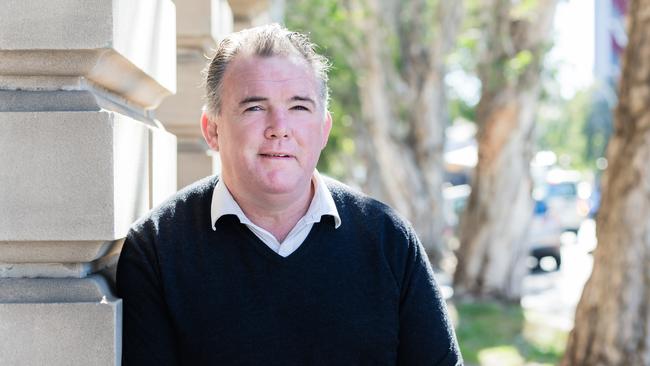How AI helped Kids Cancer Project almost double regular donations
As charity donations dry up, the Kids Cancer Project turned to artificial intelligence to preserve precious staff resources, analyse donor base data and increase investments in cancer research.

The Kids Cancer Project has been able to almost double its amount of regular donations to $2.2m a year, despite many Australians feeling the cost of living crunch, thanks to artificial intelligence.
The charity partnered with US analytics giant SAS to increase productivity among its workforce, automating tasks such as financial processing as well as combing through copious amounts of data among its donor base to determine who is likely to give more.
Kids Cancer Project chief executive Owen Finegan said this has made fundraising more strategic and targeted, while preserving precious staff resources, allowing it to grow its regular donor network by 30 per cent, year-on-year.
Mr Finegan said more than 1.4 million people had donated to the group since its inception and analysing giving patterns can be tedious and time consuming.
“If I look five years ago and wanted to get a 10 per cent increase in one of our appeals, we just mail out to another 10 per cent of people and hope to get the same results. But now … we’re able to be a bit more strategic and look at a lot of different data points on that one individual person and understand whether they may or may not have the capacity to increase their donations,” Mr Finegan said.
“So some of it’s looking at who are our current regular givers, and what are their trends, and what have they done historically, and then trying to find like minded and similar people in our database.
“If you went through them one by one, it’d be quite repetitive and boring to be able to use analytical data and to be able to filter through that and find like-minded people to put them into pools, then to ask them to try and get the right amount of conversion.”
The cost of living crisis – spurred by the Reserve Bank’s most aggressive series of interest rate hikes in 30 years – has led to expenses surging across charities, prompting more thought into how donations are collected and spent.
The Australian Charities and Not-for-profits Commission revealed that while revenue increased $11bn to a record high of just over $200bn in the past year, expenses outpaced growth, surging by $22bn in the same period – with employee costs rising a record 10 per cent.
The Kids Cancer Project approached SAS in 2018.
Since then, the collaboration has resulted in an 83 per cent surge in regular giving donations, from just under $1.2m in 2019 to more than $2.2m last year.
This has allowed the charity to increase its investments in cancer research by 15 per cent in the past year.
“When The Kids’ Cancer Project began 30 years ago, survival rates were at 50 per cent and we’re currently at 86 per cent. Our collaboration with SAS has revolutionised the way we approach fundraising, enabling us to funnel more resources into essential research and treatment. It’s this synergy that reaffirms our shared vision of achieving a future where no child has to face cancer,” Mr Finegan said.
“We’re looking forward to the advancements this renewed partnership will bring, aiming to directly impact over 1,000 children and their families annually.”
It comes as governments and regulators are grappling with the ethical use of AI as the technology rapidly evolves. Telstra has joined a UN lobby group aimed to ensure that AI technologies be “governed by values that promote human rights, dignity, and environmental sustainability, emphasising transparency, accountability, and adherence to the rule of law”.
SAS Australia and New Zealand vice president and managing director Craig Jennings said the partnership with the Kids Cancer Project as part of the company’s Data for Good program.
He said this initiative aimed to find “meaningful partnerships around the world, focused on using data and analytics to solve humanitarian issues around poverty, health, human rights, education and the environment.”
Focus areas for the next three years with the Kids Cancer Project include advancing data-driven decision-making, broadening digital engagement with donors, and leveraging automation for consistent communications. It is also establishing a “comprehensive 360-degree view” of its donors through social media and wider digital platform activities, with engagements more targeted and personalised.
“Witnessing the impact of our technology on the donor management process and the progression of childhood cancer research and trials first-hand has been inspiring,” Mr Jennings said.
“Our goal for the next three years is to continue leveraging our analytics expertise to explore innovative ways that can further expedite the journey towards eradicating childhood cancer”.




To join the conversation, please log in. Don't have an account? Register
Join the conversation, you are commenting as Logout